I remember standing in a dusty yard with a customer who needed to move 30 tons of equipment. The trailer he had wasn’t built for it—and we both knew it. Bent axles. Delayed delivery. Costly mistake.
That day taught me something important.
Since then, I’ve helped buyers figure out what works and what doesn’t. Not based on guesses—but on actual experience out in the field.
If you’re here, you’re likely asking: What kind of trailer do I need? Flatbed? Low-bed? Something enclosed? The options can be overwhelming. And choosing wrong? That gets expensive fast.
This article breaks it down. You’ll find 10 different semi-trailer types, explained simply. I’ll cover load types, axle setup, terrain fit, and how each one performs.
By the end, you’ll know exactly which trailer fits your work.
So let’s begin!
Quick Comparison Table
Want a quick look before the deep dive? This table shows how each trailer type compares on things like capacity, structure, and usage.
| Trailer Type | Structure | Common Cargo | Load Capacity | Loading Style | Key Advantage |
| Flatbed Trailer | Open platform | Machinery, pallets, lumber | 20–25 tons | Side, top, rear | Easy loading access |
| Lowbed Trailer | Dropped deck | Heavy equipment, oversized loads | 25–70 tons | Rear (with ramps) | Carries tall or heavy machinery |
| Skeletal Trailer | Steel frame | Shipping containers (20ft/40ft) | 20–40 tons | Rear (container lift) | Lightweight and made for containers |
| Dump Trailer | Open box/tub | Gravel, sand, demolition debris | 20–40 tons | Top-load, rear-dump | Fast unloading using hydraulics |
| Tanker Trailer | Enclosed tank | Liquids (fuel, milk, chemicals) | 5,000–11,000 gal | Top/bottom valves | Maintains liquid temperature and flow |
| Curtain Side Trailer | Enclosed with curtains | Pallets, boxed goods | 20–30 tons | Side, rear | Side access with weather protection |
| Warehouse Trailer | Enclosed box | Inventory, overflow storage | 20–30 tons | Rear only | Extra on-site or mobile storage |
| Refrigerated Trailer | Insulated and cooled | Perishables, pharmaceuticals | 20–25 tons | Rear only | Keeps cargo at specific temperatures |
| Fence Trailer | Flatbed + side rails | Bagged goods, bottled products | 20–30 tons | Side, top, rear | Open access with basic containment |
| Extendable Trailer | Telescoping deck | Long beams, wind blades, girders | 20–60 tons | Rear, crane/lift | Adjustable length for oversized cargo |
Let’s move on and take a closer look at each trailer—how they’re built, what they haul, and why they matter.
1. Flatbed Trailer
One of my earliest jobs was helping a customer move heavy steel beams without access to a dock—flatbed was the only option that worked. That’s when I saw just how versatile these trailers are.
A flatbed is a trailer with no roof or sides. It’s basically a flat platform built for cargo that loads from the top, side, or rear. You can haul almost anything that doesn’t need full weather protection.
Key Features
- Axle configuration: Usually 2 or 3 axles
- Deck height: About 60 inches
- Load capacity: Roughly 20–25 tons
- Loading access: Rear, side, or top
- Structure: Open—no roof or walls
- Customization options:
- Stake pockets and tie-down points
- Wood or steel deck
- Drop-deck or double-drop versions
- Side rails or toolboxes
What Can You Haul with a Flatbed?
- Large machines
- Steel pipes and beams
- Lumber or bundled materials
- Hay bales and farm supplies
- Palletized goods or containers
Who Uses Flatbed Trailers?
- Equipment haulers
- Agricultural workers
- Retail supply movers
- General freight carriers
Why Do People Choose Flatbeds?
Flatbeds are easy to load, even without a dock. They handle large, wide, or oddly shaped cargo. You can load with cranes or forklifts from any direction. They’re also more affordable than enclosed trailers.
Things to Consider
Flatbeds don’t protect cargo from weather, and wide loads may need permits. At Rhinotrail, we build flatbeds with custom options to help reduce these risks—like extra tie-downs and deck choices that match your cargo needs.
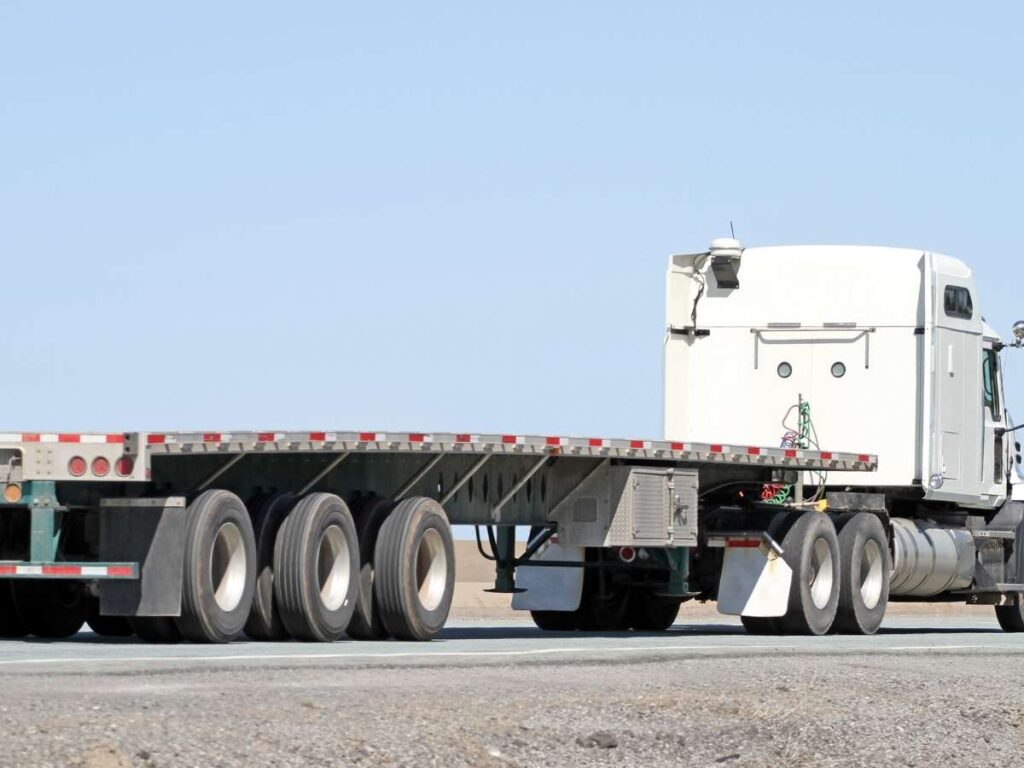
2. Lowbed Trailer
I’ve seen it more than once—someone trying to haul a tall machine on a standard trailer, only to get flagged for being over height. If you’ve ever had that issue, you know how stressful it is.
That’s where a lowbed trailer comes in. You use it when your cargo is just too tall or too heavy for regular trailers. The deck sits close to the ground, giving you extra clearance without needing extra permits every time.
Key Features
- Axle configuration: Usually 2 to 4 axles
- Deck height: Around 18 to 24 inches
- Load capacity: Typically between 25–70 tons
- Loading access: Rear entry using ramps
- Structure: Dropped center deck, open style
- Customization options:
- Extendable deck for longer loads
- Removable gooseneck for front loading
- Hydraulic suspension
- Steel or wood deck options
- Extra axle slots for weight support
What Can You Haul with a Lowbed?
- Excavators
- Bulldozers
- Large tanks
- Cranes
- Heavy generators
- Road-building machines
Who Uses Lowbed Trailers?
- Heavy haulers
- Machinery movers
- Site contractors
- Oversized freight operators
Why Do You Choose a Lowbed Trailer?
You choose a lowbed when your cargo won’t fit safely on a flatbed or standard trailer. Maybe it’s too tall. Maybe it’s just plain heavy. Either way, a lowbed helps you haul it without breaking road rules or damaging equipment.
Things to Consider
You’ll need permits for some loads, and lowbeds can be harder to steer in tight areas. But if your job involves height or weight challenges, this trailer gives you the clearance you need.
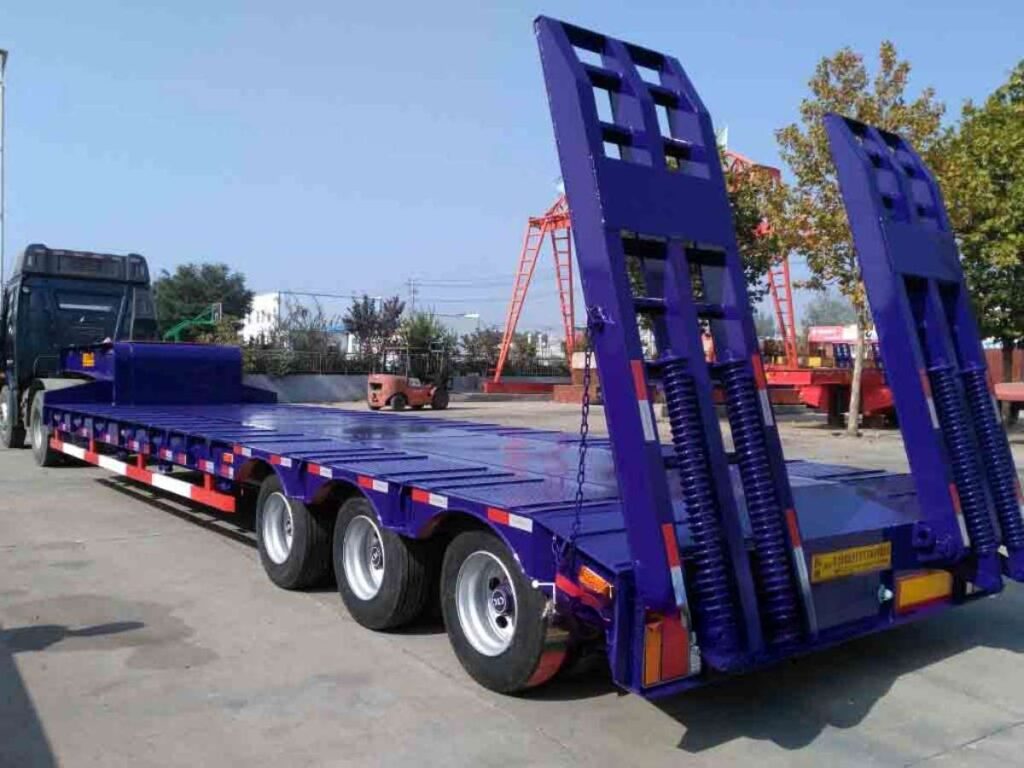
3. Skeletal Trailer
At first glance, a skeletal trailer might look too simple. Just a frame, axles, and a few locking points. But if you’re moving containers, that’s exactly what you need—nothing extra to slow you down.
You use a skeletal trailer (also called a container chassis) to transport shipping containers. It’s built for speed, efficiency, and direct loading. No flooring. No walls. Just a strong steel frame that holds containers in place with twist locks.
Key Features
- Axle configuration: Typically 2 or 3 axles
- Deck height: About 48 to 52 inches
- Load capacity: Usually 20 to 40 tons
- Loading access: Rear loading using cranes or container lifts
- Structure: Bare steel frame—no sides or deck surface
- Customization options:
- Extendable chassis for different container sizes
- Twist locks for 20 ft and 40 ft containers
- Gooseneck design for taller container clearance
- Air suspension or ABS braking
- LED safety lights and toolboxes
What Can You Haul with a Skeletal Trailer?
- Standard 20 ft containers
- 40 ft and 45 ft containers
- ISO tanks mounted in frames
- Flat-rack containerized cargo
Who Uses Skeletal Trailers?
- Intermodal transporters
- Port and depot operators
- Freight forwarders
- Long-haul container carriers
Why Do You Choose a Skeletal Trailer?
You choose this trailer when you’re moving containers—plain and simple. The design is light, which gives you more legal payload. It’s also faster to load and unload compared to enclosed or decked trailers.
Things to Consider
You’ll need a container to move anything—these trailers can’t haul loose cargo. They’re built for one job, and they do it well, but flexibility isn’t the strong point.
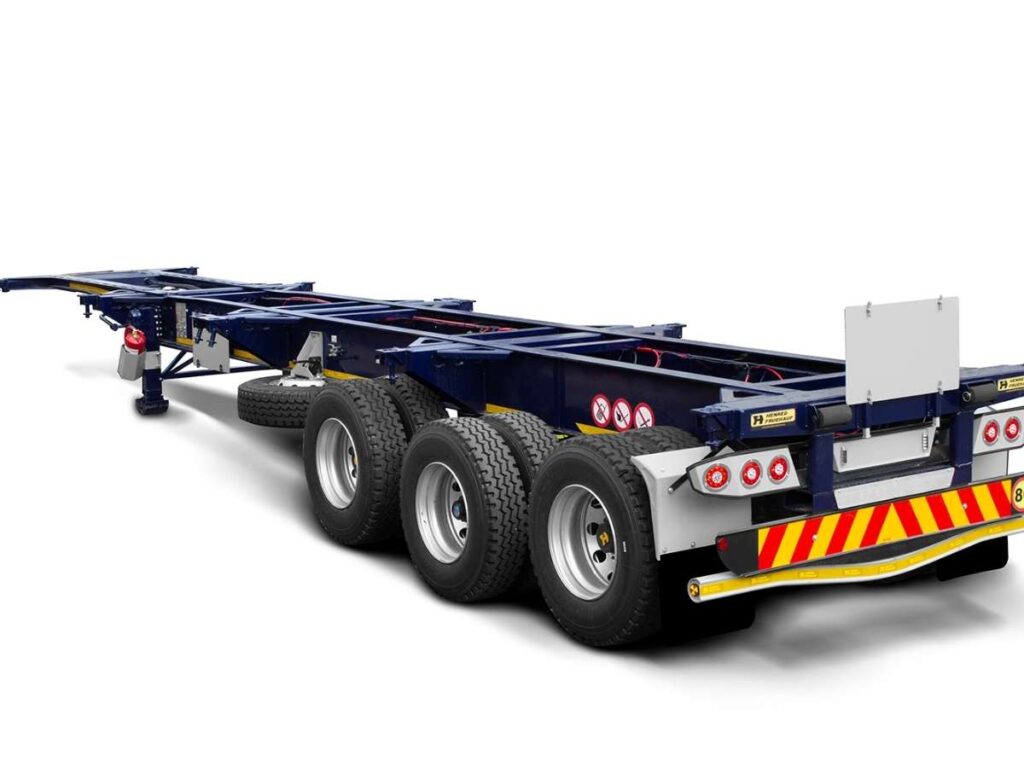
4. Dump Trailer
You know that feeling when you’re stuck unloading gravel by hand and the clock just keeps ticking? A dump trailer solves that problem in seconds. Load it once, press the lift, and let gravity do the rest.
A dump trailer is made to haul and unload loose bulk material. It has a hydraulic system that lifts the bed, tilting it so the cargo slides right out the back.
Key Features
- Axle configuration: Usually 2 to 4 axles
- Deck height: Around 50–60 inches
- Load capacity: Typically 20–40 tons
- Loading access: Open top—loads from above
- Structure: Steel box or tub body with hydraulic tipping
- Customization options:
- High-lift tailgates
- Heavy-duty floor plates
- Sidewall extensions
- Auto tarping systems
- Wireless remote tipping controls
What Can You Haul with a Dump Trailer?
- Gravel and crushed rock
- Sand or dirt
- Construction waste
- Broken concrete or bricks
- Crop bulk like feed or grain
Who Uses Dump Trailers?
- Earthwork contractors
- Road building crews
- Demolition haulers
- Farm operations moving grain or bulk feed
Things to Consider
Dump trailers need overhead space to lift and unload, which can be tricky on tight job sites. At Rhinotrail, we offer custom build options—like steeper tilt angles and reinforced bodies—to help you work efficiently even when space is limited.
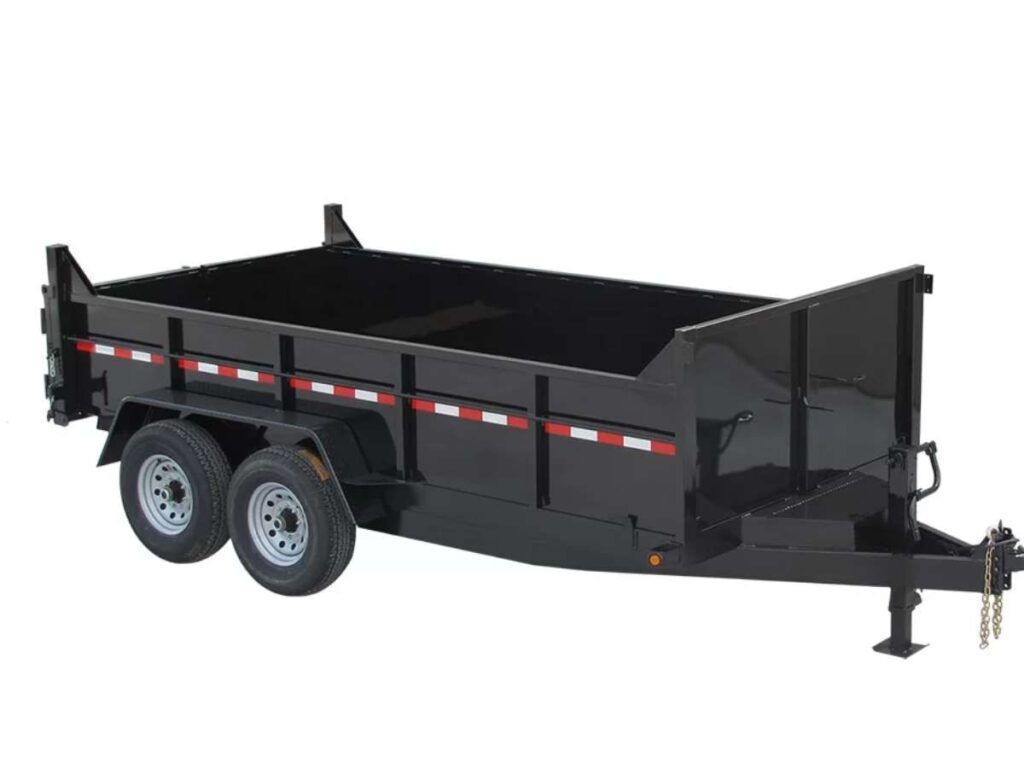
5. Tanker Trailer
You hear it before you even see it—the low hum of a pressurized valve, the metallic clank of a hose being released, the slow whoosh as liquid cargo empties into an underground tank. When you haul liquid, every sound and movement matters.
A tanker trailer is built to move liquids or gases safely. Instead of a flat surface, you have a long, round tank that stretches over the frame. Every part is sealed, balanced, and ready for controlled flow.
Key Features
- Axle configuration: Usually 2 to 5 axles, depending on capacity and weight
- Tank diameter: Around 6 to 7 feet wide
- Load capacity: Typically 5,000–11,000 gallons (source)
- Loading access: Top-loading hatches or bottom inlet valves
- Structure: Round or elliptical steel/aluminum tanks with baffles inside
- Customization options:
- Multi-compartment tanks
- Internal baffles to reduce slosh
- Vapor recovery systems
- Insulated tanks for temperature-sensitive cargo
- Food-grade stainless steel lining
What Can You Haul with a Tanker Trailer?
- Fuel (diesel, gasoline)
- Food liquids (milk, corn syrup, juice)
- Chemicals
- Liquid fertilizers
- Industrial gases or water
Who Uses Tanker Trailers?
- Fuel distributors
- Chemical transporters
- Beverage and dairy suppliers
- Agricultural liquid haulers
Why Do You Choose a Tanker Trailer?
You choose a tanker when your cargo flows—whether it’s fuel, milk, chemicals, or oil. It’s the only trailer type that lets you move thousands of gallons safely, smoothly, and without spillage.
Things to Consider
Tanker trailers need regular cleaning and special training to operate. Spills can be dangerous, and you may need permits for hazardous materials or food-grade cargo.
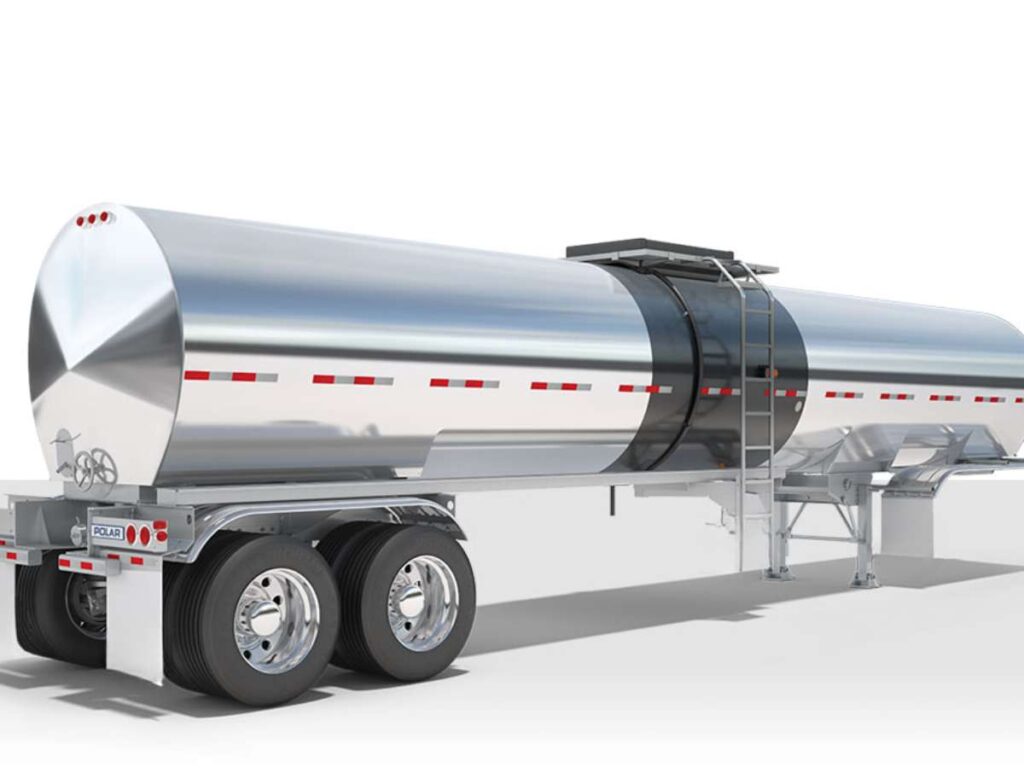
6. Curtain Side Trailer
You slide the curtain open and feel the heavy fabric brushing your arm. The metal rings rattle along the track. Light spills across stacked pallets, neatly arranged and ready for quick unloading.
That’s the rhythm of working with a curtain side trailer. It gives you fast access like a flatbed, but with coverage more like a box. The soft sides open wide—no need to unload everything from the back.
Key Features
- Axle configuration: Usually 2 or 3 axles
- Deck height: Around 48–52 inches
- Load capacity: Typically 20–30 tons (source)
- Loading access: Side access via sliding curtains; rear loading is also possible
- Structure: Fixed roof and floor with retractable curtain sides
- Customization options:
- Heavy-duty curtain material
- Load bars or side posts
- Roof sections that lift or open
- Modular frames for easier cargo control
- Built-in strapping points
What Can You Haul with a Curtain Side Trailer?
- Furniture and boxed products
- Palletized freight
- Sheet goods like plywood or drywall
- Coils and rolls of material
- Mixed cargo in regional delivery route
Who Uses Curtain Side Trailers?
- Freight companies handling multiple stops
- Furniture and appliance haulers
- Regional and last-mile delivery fleets
- Suppliers of large or long products
Why Do You Choose a Curtain Side Trailer?
You choose it when side access matters. If you’re loading with forklifts or dealing with long, palletized goods, this trailer helps keep everything moving without delay—and without leaving your load exposed to the elements.
Things to Consider
Curtain side trailers need extra care when securing the curtain system, especially in strong wind or tight spaces. The side panels must also be inspected regularly to prevent wear or small tears over time.
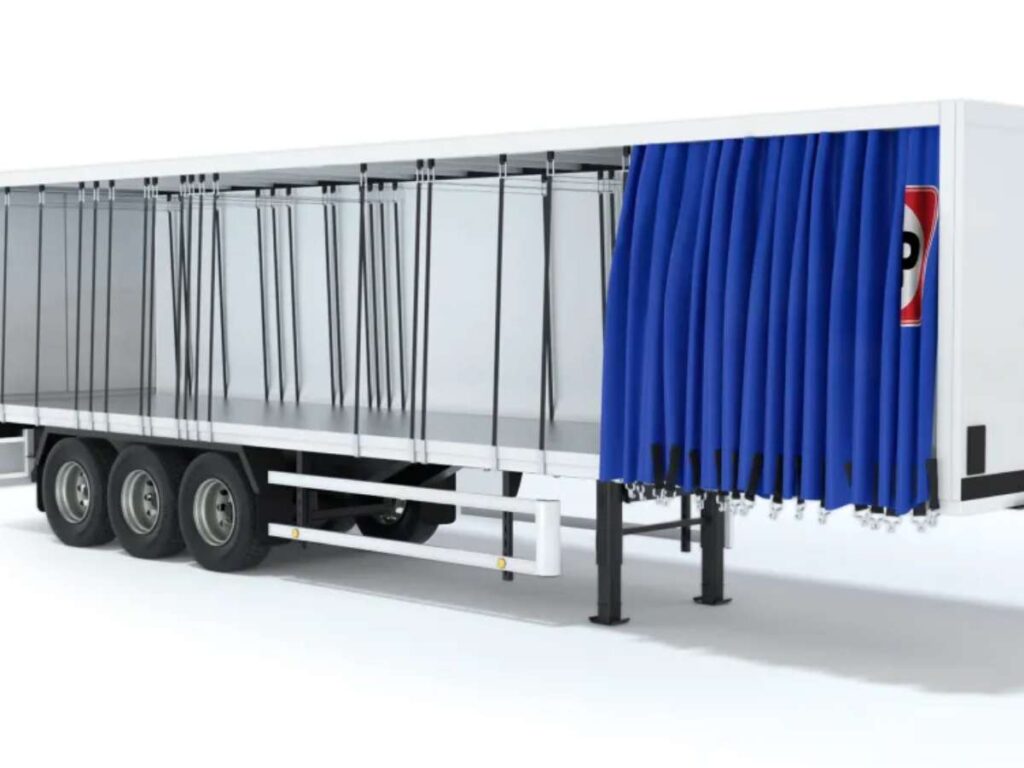
7. Warehouse Trailer
“Where do you want me to drop it?” The driver asked, engine idling as he looked around the crowded lot. I remember standing there, thinking, It’s not just a trailer—it’s an extension of the warehouse. You don’t just park it. You use it like a mobile storage room that keeps goods close to the action, but out of the way.
A warehouse trailer is used as extra storage on wheels. It stays parked for long periods and acts like a portable warehouse—dry, secure, and always ready.
Key Features
- Axle configuration: Usually tandem axles or more for stability
- Deck height: Standard dock height (~48–52 inches)
- Load capacity: Often 20–30 tons, depending on how it’s used (source)
- Loading access: Rear doors (like a dry van); some versions offer side access
- Structure: Fully enclosed box trailer
- Customization options:
- Roll-up or swing doors
- Interior shelving or racks
- Insulated walls
- Ventilation or climate control
- Reinforced flooring for long-term loads
What Can You Haul or Store in a Warehouse Trailer?
- Seasonal or overflow inventory
- Tools and equipment
- Palletized supplies
- Large boxed goods
- Event or retail stock
Who Uses Warehouse Trailers?
- Retail chains during peak seasons
- Distribution centers with fluctuating stock
- Event teams store gear onsite
- Small manufacturers managing overflow
Why Do You Choose a Warehouse Trailer?
You choose this type when you’ve run out of space inside the building. It gives you flexible, movable storage without construction. You can position it where you need it—next to a dock, behind the shop, or at a job site.
Things to Consider
Since these trailers stay in one place, you’ll want to check that the landing gear is stable and weather seals are intact. Doors, floors, and tires can wear faster when trailers sit fully loaded for long periods.
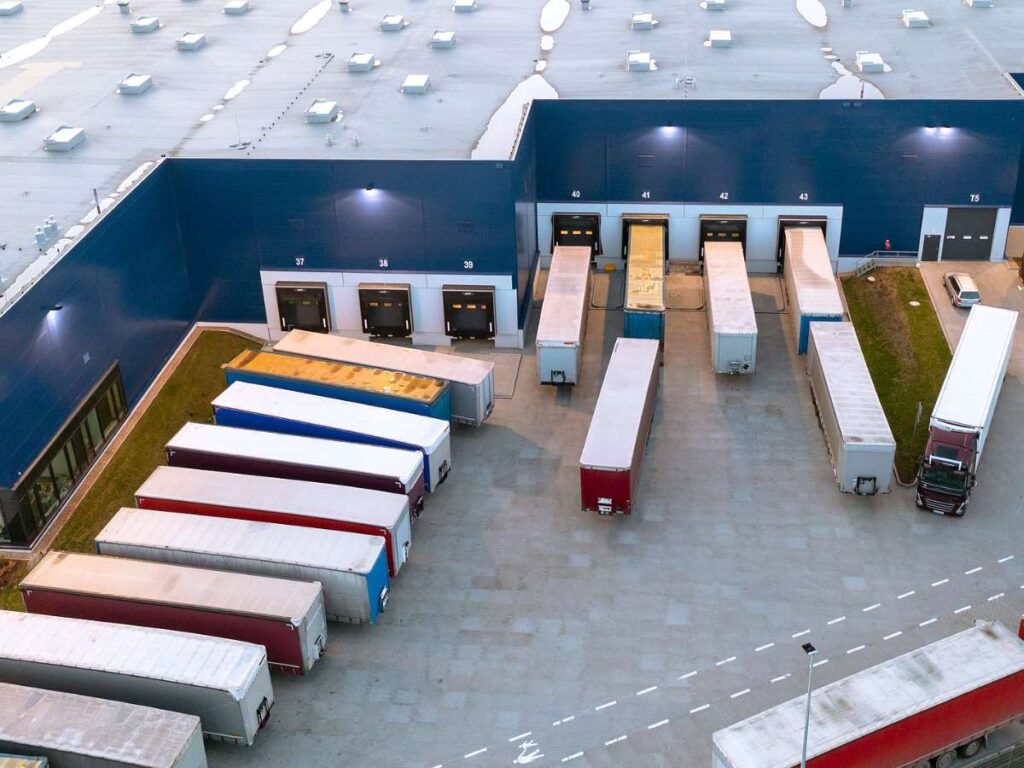
8. Refrigerated Trailer (Reefer)
You open the rear doors and feel the cold air rushing out. It hits your face like walking into a walk-in freezer. That’s when you know your cargo—whether it’s meat, dairy, or medicine—is right where it needs to be.
A refrigerated trailer, also called a reefer, is built to move temperature-sensitive goods. It has an insulated body and a built-in cooling unit that keeps the inside cold—or even frozen—no matter how hot it gets outside.
Key Features
- Axle configuration: Usually 2 or 3 axles
- Deck height: Around 48–52 inches
- Load capacity: Typically 20–25 tons (source)
- Loading access: Rear loading with sealed doors
- Structure: Fully enclosed with insulated walls, floors, and ceilings
- Customization options:
- Multi-temp zones for different product types
- Data loggers for temperature tracking
- Floor drains and easy-clean surfaces
- Side doors for quicker access
- Backup power for cooling unit
What Can You Haul with a Reefer?
- Frozen foods
- Fresh produce
- Dairy and eggs
- Pharmaceuticals
- Temperature-sensitive chemicals
Who Uses Reefer Trailers?
- Food distributors
- Grocery supply chains
- Medical transport services
- Cold-storage logistics companies
Why Do You Choose a Reefer Trailer?
You choose a reefer when your cargo has to stay cold—no excuses. It’s not just about delivery; it’s about safety, shelf life, and keeping your products in perfect condition from loading dock to drop-off.
Things to Consider
Reefers need regular maintenance to keep the cooling unit working properly. You’ll also burn more fuel than with standard trailers since the refrigeration system runs constantly during transport.
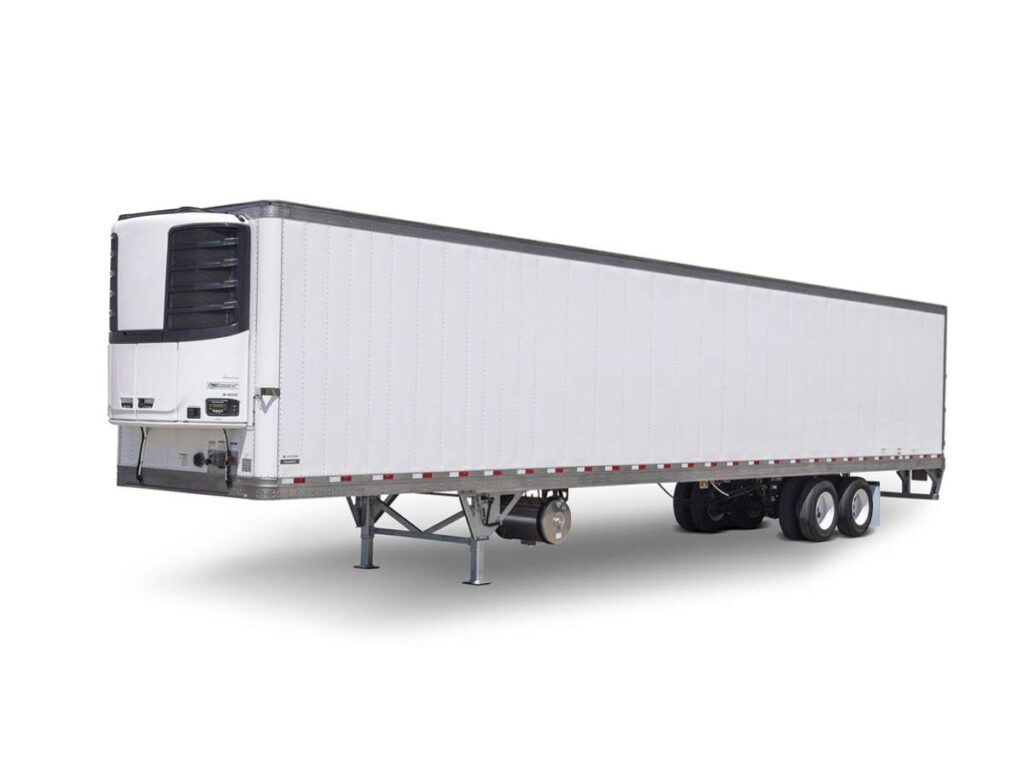
9. Fence Trailer
You pull up to the loading yard, and the forklift driver waves you over. He’s ready to stack cargo high and wide—but this time, you don’t need to worry about strapping every pallet down. The side rails on your fence trailer keep everything in place.
A fence trailer is an open flatbed with fixed or removable side panels. You use it when you need a little more containment than a flatbed but don’t need a fully enclosed box. It’s simple, open, and ready for bulky or loose cargo.
Key Features
- Axle configuration: Usually 2 or 3 axles
- Deck height: Around 48–60 inches
- Load capacity: Typically 20–30 tons (source)
- Loading access: Rear, side, or top
- Structure: Open flat deck with vertical metal rails or removable fence panels
- Customization options:
- Foldable or detachable side panels
- Load locks or strap points
- Rear gates or ramps
- Reinforced floor for heavy items
- Side curtain add-ons for dust protection
What Can You Haul with a Fence Trailer?
- Bagged cement or grain
- Bottled water and packaged beverages
- Palletized boxes
- Fencing material, pipes, or lumber
- Lightweight construction gear
Who Uses Fence Trailers?
- Beverage distributors
- Hardware and building supply carriers
- Farm and ag transporters
- Local delivery fleets
Why Do You Choose a Fence Trailer?
You choose a fence trailer when you want fast, easy loading—without cargo spilling over. It gives you more containment than a flatbed, but more flexibility than a box trailer.
Things to Consider
Fence trailers don’t protect against rain or theft, so your cargo needs to handle exposure. You’ll also want to check the height of your side panels to make sure they match the type of cargo you’re hauling.
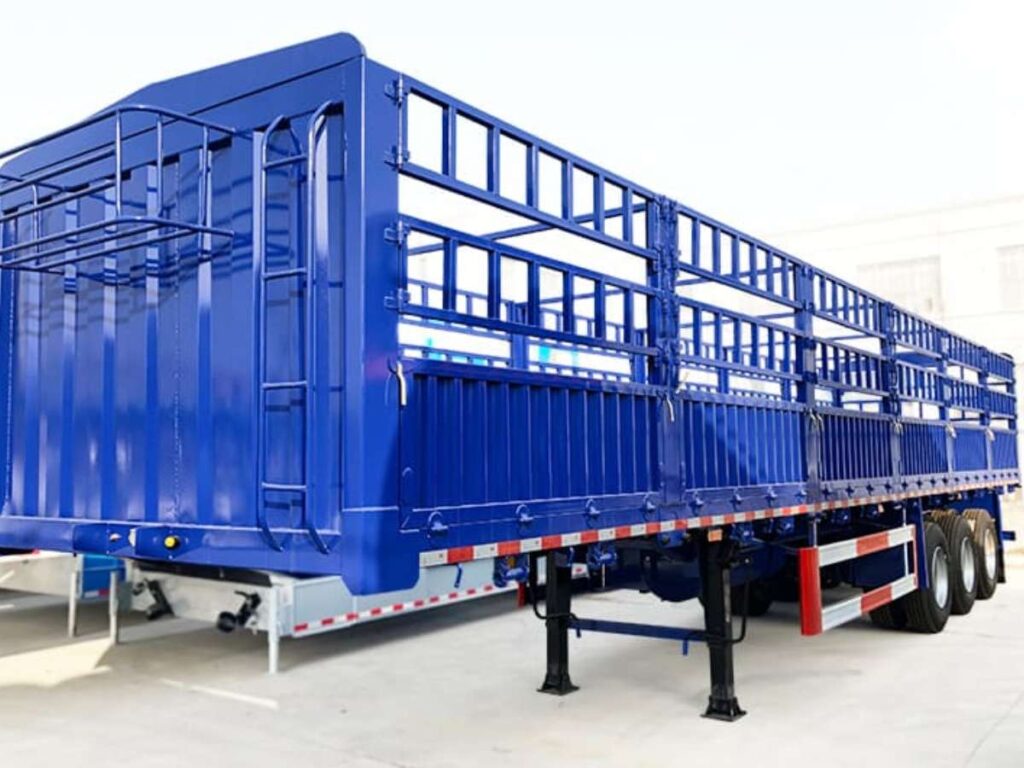
10. Extendable Trailer
The load was too long for a standard flatbed. We measured it three times, hoping it would fit. The driver just shook his head and said, “We need a trailer that grows.”
That’s exactly what an extendable trailer does. You start with a standard-length deck, then stretch it to fit long, oversized cargo—like beams, windmill blades, or pipes. It gives you the flexibility to haul loads that change in length, without swapping trailers.
Key Features
- Axle configuration: Usually 2 to 4 axles depending on length and weight
- Deck height: Around 36–42 inches (standard to drop-deck range)
- Load capacity: Varies by configuration, often 20–60 tons (source)
- Loading access: Rear or side; often uses cranes or forklifts
- Structure: Telescoping frame with extendable main deck
- Customization options:
- Hydraulic or manual extension systems
- Removable gooseneck options
- Additional tie-down points for long loads
- Multi-position locking pins
- Adjustable axle spacing
What Can You Haul with an Extendable Trailer?
- Steel beams or girders
- Long pipes and tubing
- Wind turbine blades
- Bridge sections
- Precast concrete components
Who Uses Extendable Trailers?
- Heavy haulers
- Specialized construction teams
- Infrastructure and bridge builders
- Energy and turbine transporters
Why Do You Choose an Extendable Trailer?
You choose this trailer when your cargo doesn’t always fit the same size. If your job includes hauling oversized or awkwardly long materials, the ability to extend the trailer gives you a safer and more efficient way to move them.
Things to Consider
You’ll need to check length limits on certain roads, especially when the trailer is fully extended. Setup takes more time than a standard flatbed, and permits are often required for longer hauls.
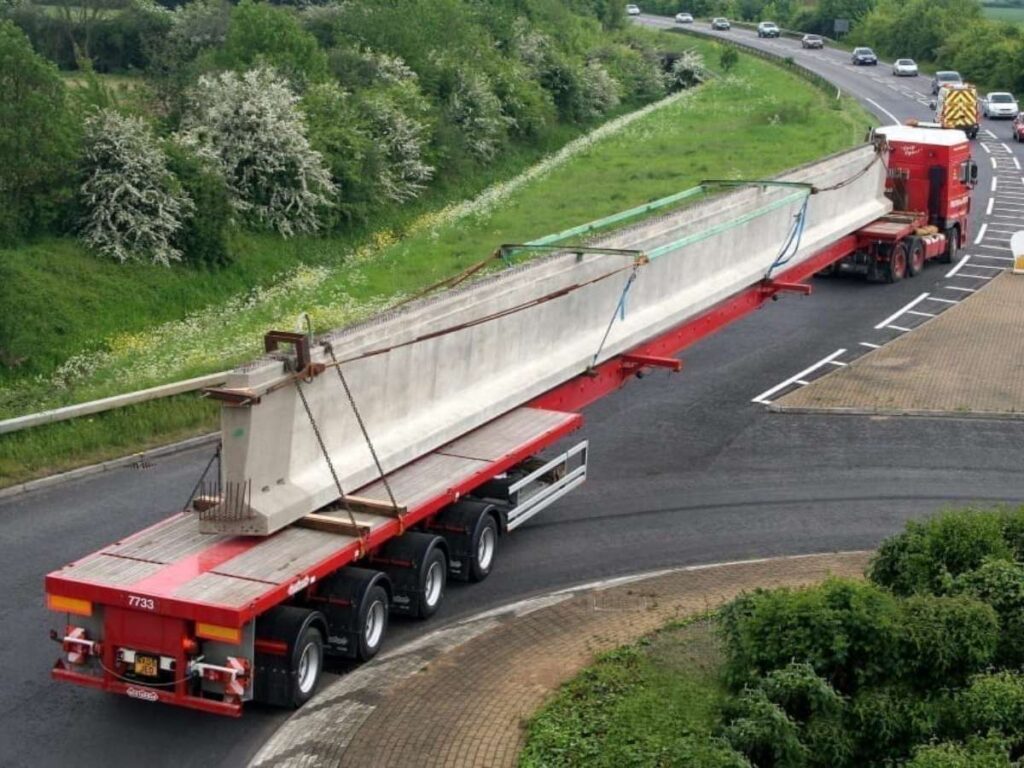
Conclusion
We started with a simple question: Which trailer fits your work best?
Now you’ve got the answers. You’ve seen how each type compares, what it’s built for, and how it could work for you.
It’s time to stop guessing—and start moving.
Choosing the right trailer isn’t just smart. It’s the difference between profit and pain.
So look at your load. Look at your route. You know what comes next.
Have questions about choosing the right trailer for your needs?
Contact us today. We’re here to help.


